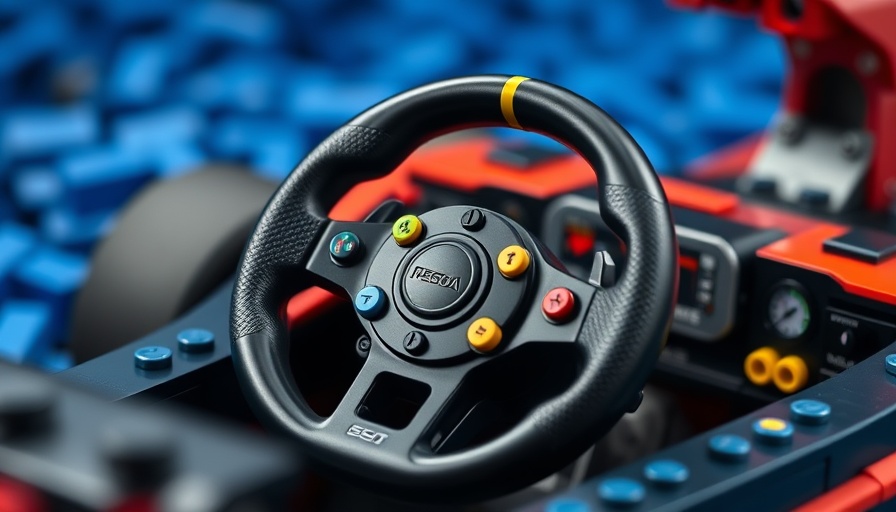
The Innovative Merge of LEGO and F1 Racing
In an extraordinary fusion of creativity and engineering, the automotive world met the imaginative realm of LEGO at the Miami Grand Prix, where ten life-size Formula 1 cars, built entirely from LEGO bricks, were showcased. This groundbreaking project took 22,000 hours of labor from a team of 26 builders, culminating in a display that starkly contrasts the high-speed, cutting-edge technology typically associated with Formula 1. The exactness behind these LEGO structures is astounding: each car, weighing double that of traditional F1 vehicles, is composed of about 400,000 LEGO bricks, assembled atop a metal frame and bolstered by glue, allowing them to navigate the racetrack in a parade.
The Appeal of LEGO: Bridging Generations
The excitement surrounding this event extends beyond mere spectacle. As Emily Prazer, F1's chief commercial officer, pointed out, this partnership allows fans to engage with the sport on a personal level. It invites fans to step into the shoes of engineers and builders, promoting creativity and reimagining the mechanics of F1. LEGO has long been more than just a toy; it is a tool for expression, and this realization rotates around an often-overlapped fanbase that includes both young creators and seasoned motorsport enthusiasts.
A Unique Fan Experience
The integration of LEGO in a high-stakes arena like Formula 1 emphasizes a broader marketing strategy that both companies are pursuing. Traditionally, F1's audience is considered distinct, appealing mainly to an adult demographic that relishes speed and performance. Meanwhile, LEGO's enjoyment spans across ages, often being associated with childhood. However, as LEGO transforms its image, the collaboration at the Miami Grand Prix suggests a melding—an experience appealing to both young and older fans alike, contributing to an educational aspect while still delivering entertainment.
The Technical Aspects of the Build
Perhaps the most fascinating elements of this LEGO initiative are the underlying technology choices. While the cars are built from traditional bricks, the innovation behind using electric motors and real Pirelli tires enriches the experience, allowing for a truly authentic driving experience on a real circuit. This decision not only reflects a commitment to detail but also serves to showcase the versatility of LEGO as a medium for not just play, but serious engineering creativity.
Embracing Innovative Partnerships
This collaboration between LEGO and Formula 1 sets a precedent for future partnerships in other industries. The intersection of technology and creativity could inspire new developments that appeal to crossover audiences. Think of how video gaming has transformed sports fandom by making games accessible and integrated with real-life experiences. As companies continue to discover ways to unite seemingly disparate industries, the future looks ripe for innovative partnerships that engage, educate, and excite.
Looking Ahead: The Future of Play and Racing
As LEGO and F1 continue to explore this collaboration, the implications could extend far beyond a one-off event. Imagine educational programs that merge STEM learning with LEGO-building concepts through partnerships with racing leagues worldwide. The success of this Miami endeavor may encourage similar initiatives that consider the social implications of interactive play paired with the allure of competitive sports.
Final Thoughts: The Power of Play and Technology
The life-size LEGO F1 cars not only impress with their visual spectacle but also challenge the conventional concepts of both creating and playing. In a world where the rapid pace of technological advancement often overshadows the simplicity of play, the unification of these two worlds creates an avenue for creativity and innovation. Whether you are a racing enthusiast, a LEGO builder, or simply someone who appreciates imaginative projects, this unique collaboration pushes the envelope of what can be achieved when two passionate entities collide.
 Add Row
Add Row  Add
Add 




Write A Comment